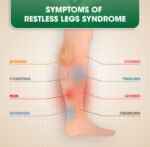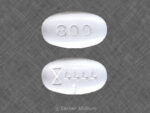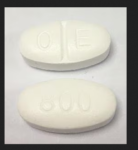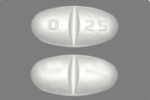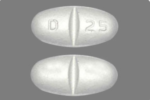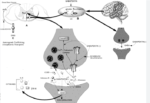Gabapentin is an anti-epileptic medication, also called an anticonvulsant. It affects chemicals and nerves in the body that are involved in the cause of seizures and some types of pain.
Gabapentin is used in adults to treat nerve pain caused by herpes virus or shingles (herpes zoster).
The Horizant brand is also used to treat restless legs syndrome (RLS).
The Neurontin brand is also used to treat seizures in adults and children who are at least 3 years old.
Use only the brand and form of gabapentin that your doctor has prescribed. Check your medicine each time you get a refill at the pharmacy, to make sure you have received the correct form of this medication.
Dosage For Postherpetic Neuralgia
In adults with postherpetic neuralgia, NEURONTIN may be initiated on Day 1 as a single 300 mg dose, on Day 2 as 600 mg/day (300 mg two times a day), and on Day 3 as 900 mg/day (300 mg three times a day). The dose can subsequently be titrated up as needed for pain relief to a dose of 1800 mg/day (600 mg three times a day). In clinical studies, efficacy was demonstrated over a range of doses from 1800 mg/day to 3600 mg/day with comparable effects across the dose range; however, in these clinical studies, the additional benefit of using doses greater than 1800 mg/day was not demonstrated.
Dosage For Epilepsy With Partial Onset Seizures
Patients 12 Years Of Age And Above
The starting dose is 300 mg three times a day. The recommended maintenance dose of NEURONTIN is 300 mg to 600 mg three times a day. Dosages up to 2400 mg/day have been well tolerated in long-term clinical studies. Doses of 3600 mg/day have also been administered to a small number of patients for a relatively short duration, and have been well tolerated. Administer NEURONTIN three times a day using 300 mg or 400 mg capsules, or 600 mg or 800 mg tablets. The maximum time between doses should not exceed 12 hours.
Pediatric Patients Age 3 To 11 Years
The starting dose range is 10 mg/kg/day to 15 mg/kg/day, given in three divided doses, and the recommended maintenance dose reached by upward titration over a period of approximately 3 days. The recommended maintenance dose of NEURONTIN in patients 3 to 4 years of age is 40 mg/kg/day, given in three divided doses. The recommended maintenance dose of NEURONTIN in patients 5 to 11 years of age is 25 mg/kg/day to 35 mg/kg/day, given in three divided doses. NEURONTIN may be administered as the oral solution, capsule, or tablet, or using combinations of these formulations. Dosages up to 50 mg/kg/day have been well tolerated in a long-term clinical study. The maximum time interval between doses should not exceed 12 hours.
Dosage Adjustment In Patients With Renal Impairment
Dosage adjustment in patients 12 years of age and older with renal impairment or undergoing hemodialysis is recommended, as follows (see dosing recommendations above for effective doses in each indication):
TABLE 1. NEURONTIN Dosage Based on Renal Function
| Renal Function Creatinine Clearance (mL/min) | Total Daily Dose Range (mg/day) | Dose Regimen (mg) | ||||
| ≥ 60 | 900 to 3600 | 300 TID | 400 TID | 600 TID | 800 TID | 1200 TID |
| >30 to 59 | 400 to 1400 | 200 BID | 300 BID | 400 BID | 500 BID | 700 BID |
| >15 to 29 | 200 to 700 | 200 QD | 300 QD | 400 QD | 500 QD | 700 QD |
| 15* | 100 to 300 | 100 QD | 125 QD | 150 QD | 200 QD | 300 QD |
| Post-Hemodialysis Supplemental Dose (mg)† | ||||||
| Hemodialysis | 125† | 150† | 200† | 250† | 350† | |
| TID = Three times a day; BID = Two times a day; QD = Single daily dose * For patients with creatinine clearance <15 mL/min, reduce daily dose in proportion to creatinine clearance (e.g., patients with a creatinine clearance of 7.5 mL/min should receive one-half the daily dose that patients with a creatinine clearance of 15 mL/min receive). †Patients on hemodialysis should receive maintenance doses based on estimates of creatinine clearance as indicated in the upper portion of the table and a supplemental post-hemodialysis dose administered after each 4 hours of hemodialysis as indicated in the lower portion of the table. | ||||||
Creatinine clearance (CLCr) is difficult to measure in outpatients. In patients with stable renal function, creatinine clearance can be reasonably well estimated using the equation of Cockcroft and Gault:
| [140 – age (years)] × weight (kg) | ||
| CLCr = | ——————————— | (× 0.85 for female patients) |
| 72 × serum creatinine (mg/dL) |
The use of NEURONTIN in patients less than 12 years of age with compromised renal function has not been studied.
Dosage In Elderly
Because elderly patients are more likely to have decreased renal function, care should be taken in dose selection, and dose should be adjusted based on creatinine clearance values in these patients.
Administration Information
Administer NEURONTIN orally with or without food.
NEURONTIN capsules should be swallowed whole with water.
Inform patients that, should they divide the scored 600 mg or 800 mg NEURONTIN tablet in order to administer a half-tablet, they should take the unused half-tablet as the next dose. Half-tablets not used within 28 days of dividing the scored tablet should be discarded.
If the NEURONTIN dose is reduced, discontinued, or substituted with an alternative medication, this should be done gradually over a minimum of 1 week (a longer period may be needed at the discretion of the prescriber).
Following is some cases of Gabapentin Overdosage and abuse
a 67-year-old woman with mood disorders and a history of alcohol abuse who was prescribed gabapentin (as well as naproxen and amitriptyline) for pain from polyneuritis. Owing to tolerance, she was prescribed 4800 mg/day (over the maximum recommended dose), but further escalated her intake to 7200 mg daily. She requested gabapentin without a prescription from pharmacists and visited numerous physicians, exaggerating her symptoms, to obtain the desired quantities.
When the patient was finally no longer able to obtain gabapentin through these methods, she developed withdrawal symptoms, characterized by trembling, sweating, excitation, pallor, and exophthalmia. The withdrawal required hospitalization, where a change to alternative pain control medications was made. Within several months, the patient had resumed abuse of gabapentin.
Similar symptoms were reported in 2 patients with histories of alcohol abuse.[7] The first case involved a 33-year-old man taking 3600 mg of gabapentin daily, which was twice his prescribed dose. He had been obtaining gabapentin refills early to reduce his craving for alcohol and make him feel calmer. When further refills were denied, he abruptly stopped taking the gabapentin and suffered acute withdrawal symptoms.
The second case described a 63-year-old man with a history of alcohol abuse who was taking gabapentin at 4900 mg/day instead of the prescribed 1800 mg/day. After presentation to the hospital and discontinuation of gabapentin, he developed severe withdrawal symptoms. Withdrawal symptoms in these patients included disorientation, confusion, tachycardia, diaphoresis, tremulousness, and agitation. The withdrawal symptoms resolved upon resumption of gabapentin.
The use of nonprescribed gabapentin by patients attending substance abuse clinics has also been reported. A questionnaire-based survey completed by 129 respondents attending 6 substance abuse treatment clinics found that 22% of patients admitted to using nonprescribed gabapentin. As a comparison, nonprescribed use of pregabalin was 3%, benzodiazepines 47%, and cannabis 43%. Some patients taking nonprescribed gabapentin reported using the drug to become intoxicated or to potentiate the effect of methadone.
Pain Medications, Pain Relief, and Pain Management
